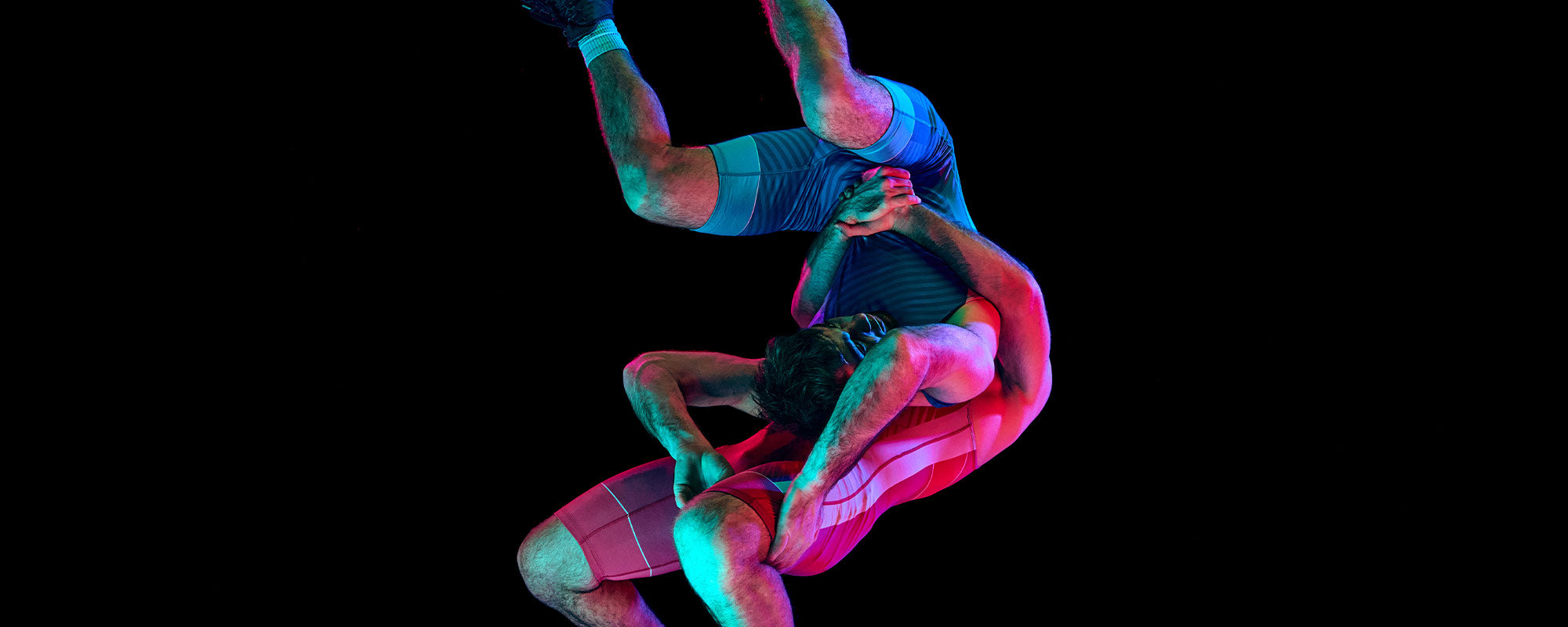Table of content
Boxing is one of the most-watched sports, with millions of fans around the globe. Many significant names, such as Muhammad Ali, have contributed in the increased popularity of the game. It also generates millions of revenue each year due to large audiences seeing it around the world. When it comes to boxing, there are punch number systems used for naming the punches. If you are also confused about the boxing punch number system, read the details below to give you understanding of the boxing punch number system.
1. Boxing Punch Number System
In boxing, a number system is used to name the punches. A specific number and name are given to each punch. A number system is used for punches one through six. Three numbers indicate the punch from your leading hand, and the other three numbers indicate the punch from your rear hand. So your odd numbers are always going to be your lead hand, and your even numbers are always your rear hand. So, the boxing system has six punches. Your jab is your one; your cross is your two, the three is your lead hook; four is the rear hook; five is a lead uppercut, and six is a rear uppercut. Let's break down a few things you want to think about when you throw each punch.
2. Why is the Punch Number System Used in Boxing?
This number system is used to make the training easier for both you and your instructor. You should memorize and learn the numbers with the names of punches. Practice the punches with a punching bag while saying the names of these punches. Speak out these names loudly. It will help you memorize the names easily. Their combinations are also used for training.
3. Boxing Punch Combinations
Some combinations are also used in the boxing punch number system. In this combination system, two punches in the usual order of sequence are combined. In this way, a total of six punches make a total of three combinations. The first two punches are combined, number one and number two, i.e., jab and cross. The next two punches are also combined. Number three and number four, i.e., lead hook and rear hook, are combined. The last two punches, number five and number six are also combined, i.e., lead uppercut and rear uppercut.
4. The Punches in Boxing
Following are the details of the total six punches used in the boxing punch number system;
4.1 The Jab
Starting on the ball of the back foot, put your weight on your back leg. How much weight you can shift from back to front determines how much power is in the jab. All the power is in your legs. So, as you throw the jab with your lead hand, you push off the back leg and transfer your weight forward. Keep your elbow perpendicular to the floor.
Twist the punch right at the end. Punching with the top two knuckles, if you hit with the bottom knuckles, you are slapping. You have to find the chemistry with the big knuckles, and you pull the hand straight back to your face in a straight line. We call that chambering your punches. So when your instructor says chamber your punches, that means pull your hands back to your face and your elbows back to your body. That is your jab, also known as a one.

4.2 The Cross
Number two is the cross. That is with your rear hand. The power comes from your back leg. Pivot on the back foot and transfer your weight forward. Keep your elbow in, close to the body. The closer your elbow stays to the midline, the more power your elbow flares out. Otherwise, you lose power and you lose accuracy.
Keep the elbow in, straight out right at the end, twisting the punch. Punch with the top two knuckles again and turn your punch over. Pull that hand straight back to your face in a straight line. Focus on pivoting on that back foot and twisting your shoulders. This is a long-range punch. How far do you have to be to land it? That is your number two, also known as your cross.

4.3 The Lead Hook
Number three is the hardest punch to learn. This punch is the lead hook. That is with your lead hand. At first you should start with the weight on the lead leg. From here, shift your weight back as you come around your opponent. Now, start with 70 percent of your weight on your lead leg. Guide this hand out about a foot away from your target. From here, your arm is about halfway extended, pop the elbow up and shift the weight back as you rotate your body.
Now, the first thing you should think about is pivoting on your lead foot. How much weight you can shift from front to back will determine how much power is in that hook. The arm is locked in like a lever. As you land the hook, hold it out and ask yourself.
Can you lift up that lead leg right now? If you can't that means there's too much weight forward. It means you are not shifting enough weight. So you need to really transfer that weight from front to back. Next, you have to come around your opponent. As you throw the hook, giving yourself about a foot of room to generate power and as you land it, it stops in the center. Landing with the top two knuckles, palm down, or thumb up is all right. This is your lead hook, also known as a number three.

4.4 The Rear Hook
The number four punch is the rear hook. Starting with the weight back on the ball of that back foot, how much weight can you shift forward as you throw that hook? Whenever you throw the hook, you need at least a foot of room to generate power. So you will come around your opponent. It will feel like a cross at an angle.
Pop the elbow up at a 90-degree angle. Transfer your weight forward as you pivot on the back foot. Land with your big knuckles, and then you pull your hands straight back to your face. You can call that as chambering your punches. That is the number four punch, also known as the rear hook.

4.5 The Lead Uppercut
The number five punch is the lead uppercut. This punch consists of two parts. Bend your knees to get into position for throwing the punch. This is the first part. From that position, you will lift yourself up as you throw that lead uppercut. The power for this number five punch comes from the quadriceps on the lead leg. Lift as you rotate your shoulder. That is the lift as well as the twist. Now, you need a foot of room to generate the power again. But this time, scoop your left hand down right above your belt line.
Lift yourself up, landing perpendicular to the floor. Your palm must be facing you and then you come back to your stance. So you have to bend to get to the position. Drop your left hand down right on your belt line. Lift yourself up and as you rotate the shoulders using your quadriceps, using your torso, landing straight up the middle. Then you chamber your punches. That is your punch number five. Also known as the lead uppercut.

4.6 The Rear Uppercut
The last punch is the number six punch, i.e., the rear uppercut. Bend your back knee and lift yourself up as you pivot on your back foot. So now you need one foot of room to generate power. Drop your hand right above your belt line. Lift yourself up, right through the center, perpendicular to the floor.
The middle palm faces you. After landing the number six punch, pull it back right to your face. All the power lies in your legs. You lift yourself up, and as you bend and pivot on that back foot, rotating your shoulders and making tight fists, you land that punch, and you relax. That is your punch number six. Also known as the rear uppercut.

5. Last Words
Boxing is a popular sport around the world, and fans love to watch it. Besides an international sport, boxing can also be used for self-defense. Many people learn boxing for self-defense. To make it easier for people to learn and train in boxing, a boxing punch number system was designed. This system makes it easy for you to memorize and learn boxing punches.
6. Frequently Asked Questions
6.1 What is the Boxing Punch Number System?
In boxing, a number system is used to name the punches. A specific number and name are given to each punch. A number system is used for punches one through six. Three numbers indicate the punch from your leading hand, and the other three numbers indicate the punch from your rear hand. So your odd numbers are always going to be your lead hand, and your even numbers are always your rear hand.
6.2 Why is the Punch Number System used in boxing?
This number system is used to make the training easier for both you and your instructor. You should memorize and learn the numbers with the names of punches. Practice the punches while saying the names of these punches. Speak out these names loudly. It will help you memorize the names easily. Their combinations are also used for training.
6.3 What Are Boxing Combinations?
Some combinations are also used in the boxing punch number system. In this combination system, two punches in the usual order of sequence are combined. In this way, a total of six punches make a total of three combinations. The first two punches are combined, number one and number two, i.e., jab and cross. The next two punches are also combined. Number three and number four, i.e., lead hook and rear hook, are combined. The last two punches, number five and number six are also combined, i.e., lead uppercut and rear uppercut.
6.4 How Many Punches Are There in the Boxing Punch Number System?
The boxing system has six punches. Your jab is your one; your cross is your two, the three is your lead hook; four is the rear hook; five is a lead uppercut, and six is a rear uppercut. Let's break down a few things you want to think about when you throw each punch.









Leave a comment
This site is protected by hCaptcha and the hCaptcha Privacy Policy and Terms of Service apply.